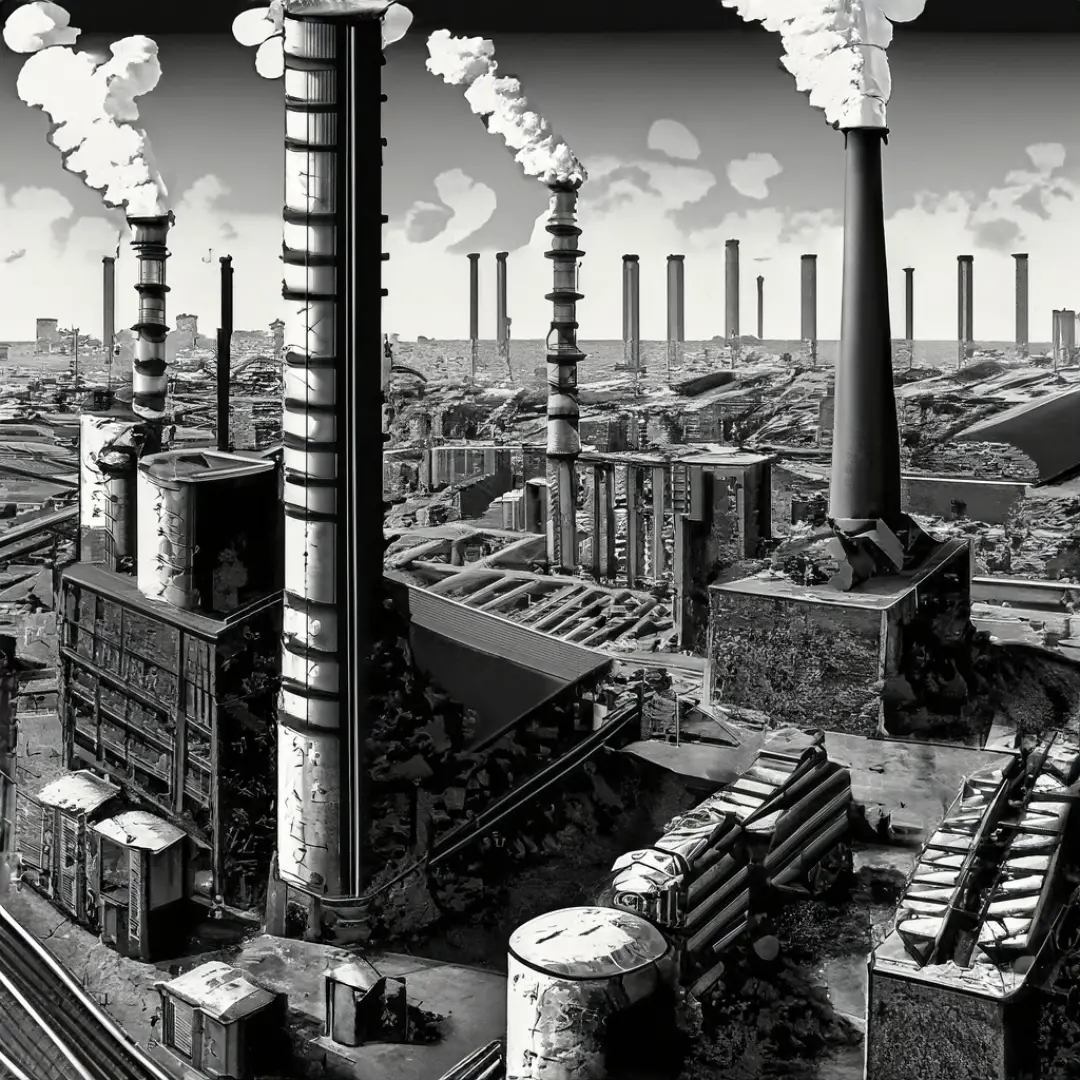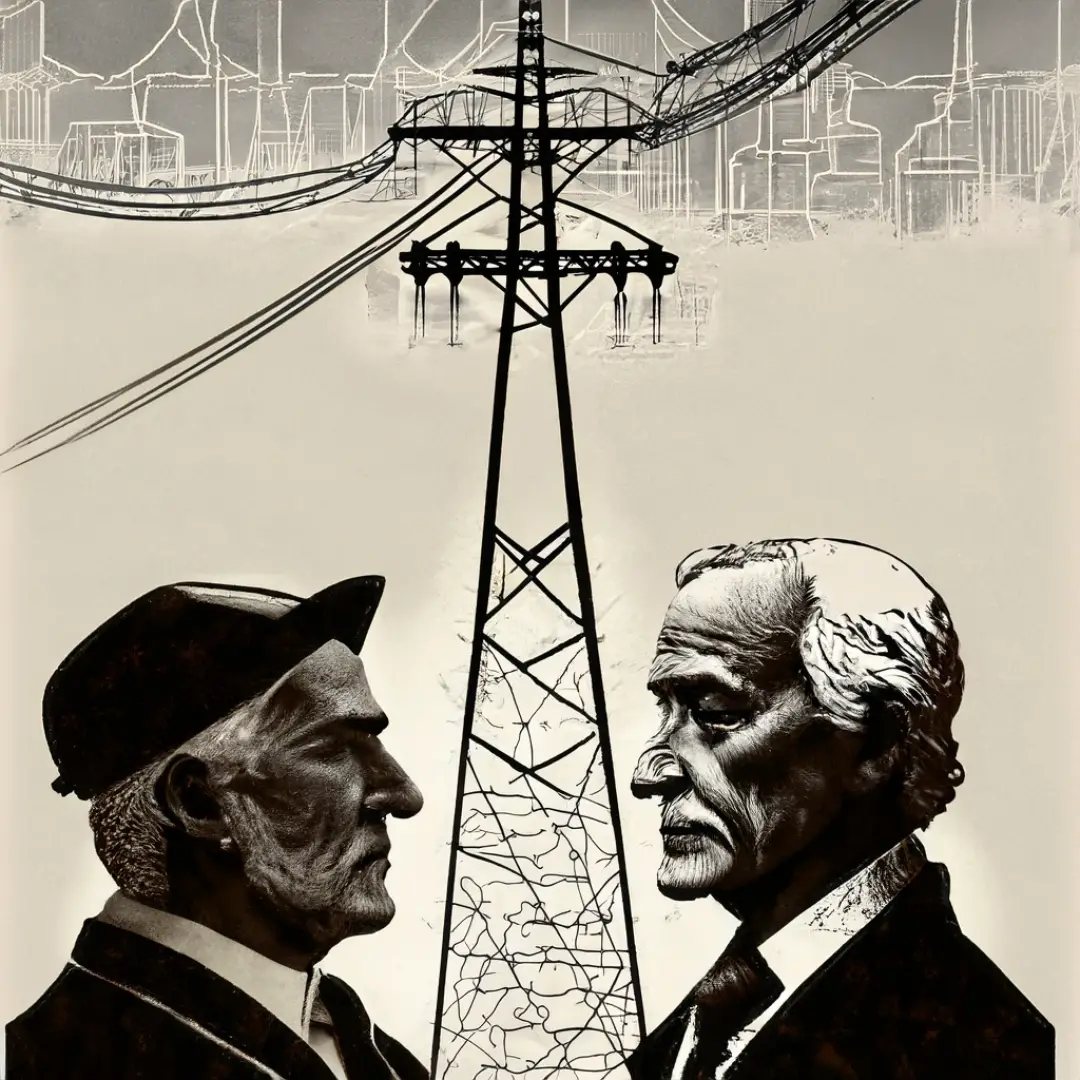In the late 19th century, an epic technological battle known as the "War of the Currents" raged in the United States, forever transforming the way the world perceives and uses electricity. At the heart of this struggle were two titans of the electrical industry: Thomas Edison and George Westinghouse. Each supported a different electricity distribution system, direct current (DC) and alternating current (AC), respectively.
This showdown not only defined the course of modern electrification, but also involved a mix of fierce competition, technical ingenuity, and advertising tactics that left an indelible mark on the history of technology.
The pre-war scene
 As the Industrial Revolution progressed, the demand for electricity grew. Thomas Edison, a prolific inventor and entrepreneur, had successfully developed an incandescent lamp in 1879. However, he realized that to bring electric light to the masses, he needed an efficient distribution system.
As the Industrial Revolution progressed, the demand for electricity grew. Thomas Edison, a prolific inventor and entrepreneur, had successfully developed an incandescent lamp in 1879. However, he realized that to bring electric light to the masses, he needed an efficient distribution system.
Edison opted for direct current (DC), which flowed in a single, constant direction from the power source. His system was based on a network of local generators that powered the incandescent lights. In 1882, he started the first electric power plant in lower Manhattan, supplying 110 volts DC to 110 customers. Although his system worked, it had significant limitations, especially in transmitting electricity over long distances. This led him to look for alternatives for energy distribution.
On the other hand, George Westinghouse, a prominent inventor and entrepreneur, saw great potential in alternating current (AC), where the direction of the electric current changes periodically. Unlike DC, AC allowed the transformation of voltages for the efficient transmission and distribution of electricity over long distances.
The challenge of direct current
Edison was a strong supporter of his DC system and, in an attempt to discredit Westinghouse's AC, launched a public relations campaign highlighting the dangers of AC. He promoted the concept that DC was safe, while AC was supposedly deadly. He even proposed the idea of using AC in electric chairs for executions, in an attempt to associate this current with death. However, these tactics failed to curb the growth of the CA.
The alternating current revolution
AC proved to be more efficient in transmitting electricity over long distances. In 1886, Westinghouse and electrical engineer Nikola Tesla collaborated to install the first AC power grid in Great Barrington, Massachusetts, powered by a hydroelectric power station. This network marked a milestone in the history of electricity by demonstrating the viability of AC for power distribution.
The climax of the Current War came with the Chicago World's Fair in 1893. Westinghouse and Tesla illuminated the fair with the AC system, while Edison promoted his direct current system in his pavilion. The efficiency and versatility of AC became evident to the public and industry.
Final Victory of Alternating Current (AC)
Eventually, alternating current prevailed as the standard for electricity distribution throughout the world. In 1896, the first effective AC power plant, known as the Niagara Falls Hydroelectric Plant, was put into operation, marking a milestone in long-distance electricity transmission. Soon after, AC became the predominant system in most power grids.
The War of the Currents left a lasting legacy in the history of technology and electrical energy. Despite Edison's efforts to discredit AC, its efficiency prevailed and paved the way for modern electrification. The rivalry between Edison and Westinghouse drove innovation in the electrical industry and established a standard for the transmission and distribution of electricity that remains essential today.
Nikola Tesla vs Thomas Edison
 The dispute in the "war of the currents" primarily involved Nikola Tesla, who worked with George Westinghouse, and Thomas Edison.
The dispute in the "war of the currents" primarily involved Nikola Tesla, who worked with George Westinghouse, and Thomas Edison.
Edison was an advocate of direct current (DC), while Tesla and Westinghouse advocated alternating current (AC). Edison was the leader of direct current, and Tesla played a key role in promoting alternating current as a more efficient way to transmit electricity over long distances.
Edison had developed DC generation and distribution systems and launched an advertising campaign to highlight the supposed dangers of AC. Additionally, he proposed the use of alternating current in electric execution chairs in an attempt to defame the alternating current system. Instead, Tesla worked on designing AC systems and demonstrated their efficiency in transmitting electrical energy.
Invention of the electric chair
The battle reached an absurd peak in 1887 when a group of delegates from New York State asked Edison if electricity could be used as a method of execution. Although Edison didn't want to hear about this at first, he admitted. With a side note: "Then you have to use my competitor's current, because it's much deadlier." Edison hoped to knock out Westinghouse by associating AC power with death.
An engineer hired by Edison, Harold P. Brown, later gave public demonstrations. Stray dogs, cats, horses and even a circus elephant were sacrificed to demonstrate the deadly alternating current. The state of New York was convinced and decided to use the execution method.
On August 6, 1890, murderer William Kemmler became the first person to be sentenced to the electric chair. Westinghouse hired the best lawyer to defend him, who called electrocution "cruel and inhuman punishment," which is prohibited by the Eighth Amendment of the United States Constitution.
The execution was a drama, because Kemmler died alone in the second instance. Westinghouse's response to this was, "They should have used an axe." Despite this, the electric chair was introduced in many US states.